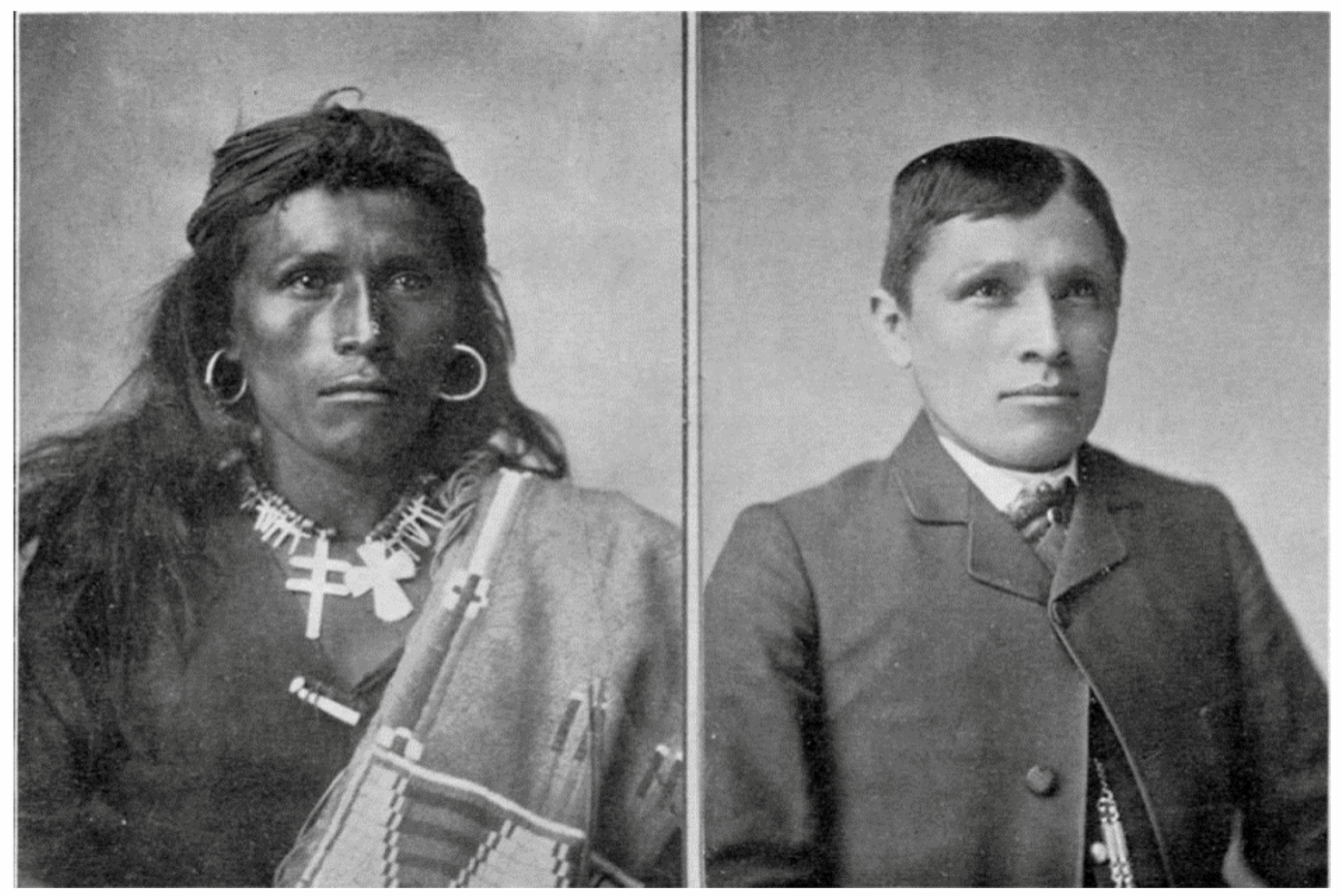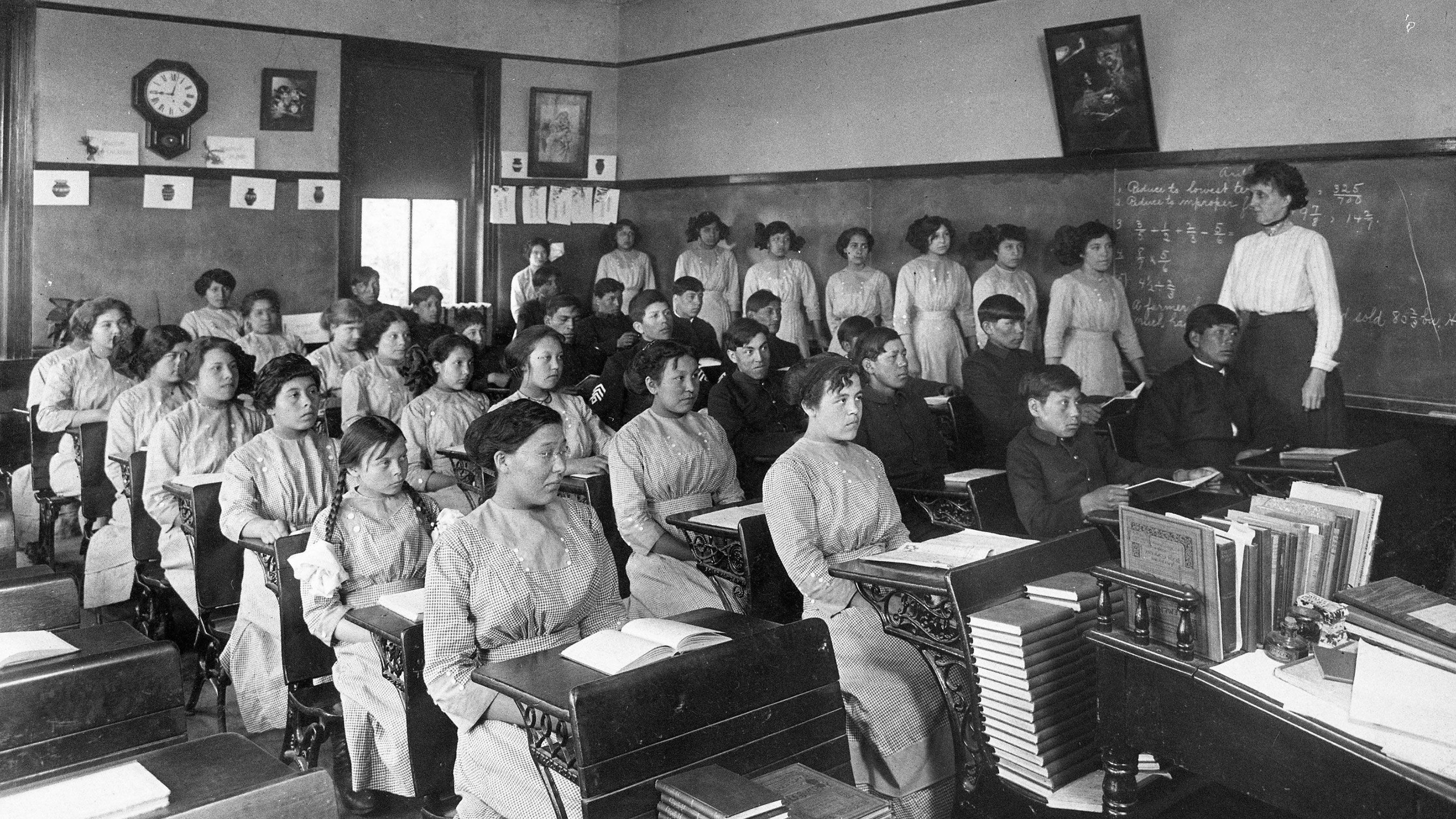
A Native American Man who has assimilated into American culture. Source: The Indigenous Foundation
For decades the United States outwardly encouraged Native Americans to assimilate into Anglo-American culture. The hope was that with assimilation, native society and culture would eventually crumble and blend into American society.
To a large extent, the policy worked great, particularly in the south. Five large Native American nations assimilated so well that they became known as the “Five Civilized Tribes.”
¨U.S. officials urge the Cherokees to abandon hunting and their traditional ways of life and to instead learn how to live, worship, and farm like Christian Americans. Many Cherokees embrace this "civilization program." (Mintz, S., & McNeil, S.)

A Native American Man who has assimilated into American culture. Source: The Indigenous Foundation

Native American children blended into a classroom with American children. Source: CNN
Despite the success of assimilation, the Native Americans were still seen as “savages” by their white counterparts. White Americans generally saw themselves as superior to their non-white counterparts, including Native Americans.
As westward expansion continued, white settlers continued to illegally encroach on native lands.
“The problem lay in the Southeast, where members of what were known as the Five Civilized Tribes refused to trade their cultivated farms for the promise of strange land in the Indian Territory with a so-called permanent title to that land. Many of these Indians had homes, representative government, children in missionary schools, and trades other than farming”. (Britannica)
Encounters between the white settlers and the Native Americans often resulted in violence. As a result, many felt that the assimilation of the Native American was an insurmountable cause.